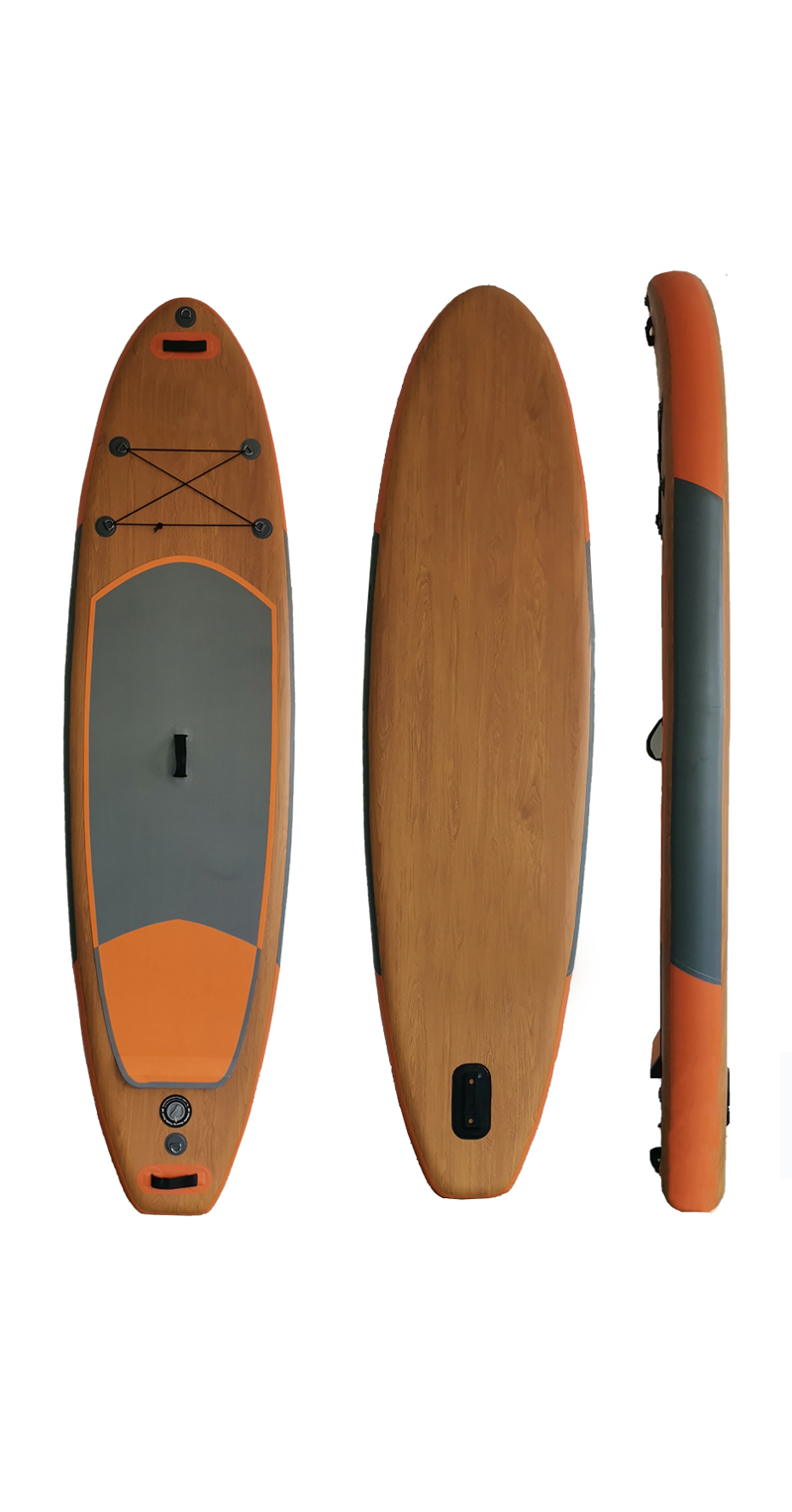The principle and usage of inflatable paddles?
Publish Time:
2025-06-15 10:53
Source:
The principle and usage of inflatable paddle boards?
The principle of an inflatable paddle board lies in the wave-like structures resembling humpback whale fins on the front of the hull. This helps the massive creature move more gracefully and steadily in the water. This structure helps reduce drag and helps the humpback whale "catch" the current, ensuring it can move flexibly even with its large size. Inspired by this, inflatable paddle boards were created.

Inflatable paddle board surfing relies on ocean waves and is done on beaches with wind and waves. The wave height should be about 1 meter, and smaller waves should not be less than 30 centimeters. The Hawaiian Islands have suitable waves for surfing year-round. Especially in winter or spring, swells from the North Pacific can reach 4 meters, and athletes can glide over 800 meters. Therefore, the Hawaiian Islands have always been the world's surfing center. Athletes stand on inflatable paddle boards or use nets, kneeling boards, inflatable rubber pads, rowboats, kayaks, etc., to control the waves. Regardless of the equipment used, athletes must have superb skills and balance and be proficient in long-distance swimming in windy and wavy conditions.
How to use an inflatable paddle board? Regardless of the equipment used, athletes should have superb skills and balance and be proficient in long-distance swimming in windy and wavy conditions. Athletes first lie down or kneel on the inflatable paddle board and paddle to a place with suitable waves as a starting point. When the wave pushes the inflatable paddle board to glide, the athlete keeps the inflatable paddle board in front of the wave crest and stands up. The legs are naturally separated front and back (usually the balance leg is in front, the control leg is in the back), the knees are slightly bent, and they follow the waves and glide quickly.
Swimming: Keep your head up, chest out, eyes forward, and hands along both sides of the inflatable paddle board, paddling from front to back, paying attention to keeping your fingers together. Depending on your weight and the size of the inflatable paddle board, you need to adjust your position on the inflatable paddle board so that your toes are close to the edge of the board. Paddle backward along both sides of the board, adjusting the rhythm of your breathing. Do not spread your arms when paddling; this will greatly reduce paddling efficiency. Swimming is a more basic skill, and you should focus most of your practice on it. How well you paddle will determine whether you can catch the wave. When the wave comes, you have successfully paddled. When you feel your inflatable paddle board moving forward and feel the speed increasing, we start to stand up. Use your palms to find your ribs and place them flat on both sides of your ribs to support your body. When the speed is fast enough, you can 'take off'.
If you don't like surfing, you can find calm water and glide slowly on the water with a paddle board. You can also enjoy different outdoor sports experiences.
Other News
The Ultimate Guide to Lightweight Inflatable Kayak Boats: Freedom on Water
Lightweight inflatable kayak boats have gained immense popularity among water sports enthusiasts and casual adventurers alike. Their innovative design combines the comfort of traditional kayaks with the convenience of portability, making them ideal for a variety of water activities, from serene lake paddling to challenging river excursions. This guide will delve into the numerous advantages that t
Get Ready for Waves: Inflatable Surfboards for Teen Enthusiasts
Get Ready for Waves: Inflatable Surfboards for Teen Enthusiasts Table of Contents Understanding Inflatable Surfboards Why Choose Inflatable Surfboards for Teens? Key Features to Look for in Inflatable Surfboards Top Inflatable Surfboards for Teen Enthusiasts Safety Tips for Surfing with Inflatable Boards Caring for Your Inflatable Surfboard Surfing Techniques for Begin
Choosing a Durable PVC Kayak for Beginners: Essential Insights
When starting your journey into kayaking, selecting the right watercraft can significantly enhance your experience. A durable PVC kayak stands out as an excellent choice for beginners, offering both resilience and ease of use. PVC, or polyvinyl chloride, is a popular material in the production of inflatable kayaks due to its strength and flexibility. Here are several reasons why a durable PVC kaya
Inflatable Surfboards for Adults: The Ultimate Guide to Enjoying Water Sports
Inflatable Surfboards for Adults: The Ultimate Guide to Enjoying Water Sports Table of Contents 1. Introduction to Inflatable Surfboards 2. Benefits of Using Inflatable Surfboards 3. How to Choose the Right Inflatable Surfboard 4. Key Features of Inflatable Surfboards 5. How to Properly Inflate and Deflate Your Surfboard 6. Essential Safety Tips for Surfing 7. Maintena
The Advantages of Soft Top Inflatable Surfboards: A Guide for Water Sports Enthusiasts
Soft top inflatable surfboards have rapidly gained popularity among water sports enthusiasts, offering a unique combination of convenience, safety, and performance. Whether you're a beginner looking to catch your first wave or an experienced surfer seeking a portable solution, understanding the advantages of soft top inflatable surfboards can help you make informed decisions. ### Portability and C
The Ultimate Guide to Choosing the Best Lightweight Inflatable Kayak Boat
The Ultimate Guide to Choosing the Best Lightweight Inflatable Kayak Boat Table of Contents 1. Understanding Lightweight Inflatable Kayaks 2. Why Choose a Lightweight Inflatable Kayak? 3. Key Features to Consider When Buying 3.1 Material Quality 3.2 Weight Capacity 3.3 Stability and Performance 3.4 Comfort Features 3.5 Portability and Storage 4. Top Lightweight Inflatable Kayaks on the Market 4.1


